Filter News
Area of Research
- Biological Systems (2)
- Biology and Environment (19)
- Computational Engineering (1)
- Computer Science (2)
- Data (1)
- Energy Science (22)
- Fusion and Fission (1)
- Materials (15)
- National Security (18)
- Neutron Science (5)
- Nuclear Science and Technology (2)
- Nuclear Systems Modeling, Simulation and Validation (1)
- Supercomputing (34)
News Type
Date
News Topics
- 3-D Printing/Advanced Manufacturing (3)
- Advanced Reactors (2)
- Artificial Intelligence (26)
- Big Data (32)
- Bioenergy (5)
- Biology (6)
- Biomedical (7)
- Biotechnology (3)
- Buildings (3)
- Chemical Sciences (2)
- Clean Water (3)
- Computer Science (36)
- Coronavirus (2)
- Cybersecurity (3)
- Emergency (1)
- Energy Storage (1)
- Environment (27)
- Exascale Computing (8)
- Frontier (8)
- Fusion (2)
- Grid (6)
- High-Performance Computing (15)
- Hydropower (2)
- Isotopes (1)
- ITER (1)
- Machine Learning (13)
- Materials Science (6)
- Mathematics (2)
- Microscopy (2)
- Molten Salt (1)
- Nanotechnology (4)
- National Security (24)
- Neutron Science (2)
- Nuclear Energy (3)
- Physics (4)
- Quantum Science (1)
- Security (4)
- Simulation (6)
- Space Exploration (1)
- Statistics (2)
- Summit (10)
- Transportation (5)
Media Contacts
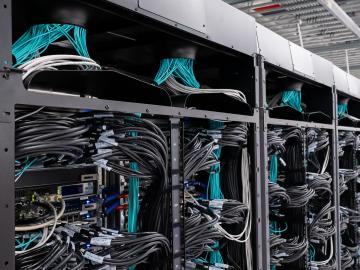
Researchers from ORNL have developed a new application to increase efficiency in memory systems for high performance computing. Rather than allow data to bog down traditional memory systems in supercomputers and impact performance, the team from ORNL, along with researchers from the University of Tennessee, Knoxville, created a framework to manage data more efficiently with memory systems that employ more complex structures.
Massimiliano (Max) Lupo Pasini, an R&D data scientist from ORNL, was awarded the National Energy Research Scientific Computing Center’s High Performance Computing Achievement Award for High Impact Scientific Achievement for his work in “Groundbreaking contributions to scientific machine learning, particularly through the development of HydraGNN.”
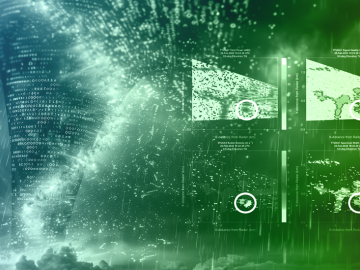
Researchers at the Department of Energy’s Oak Ridge National Laboratory are using non-weather data from the nationwide weather radar network to understand how to track non-meteorological events moving through the air for better emergency response.
During Hurricanes Helene and Milton, ORNL deployed drone teams and the Mapster platform to gather and share geospatial data, aiding recovery and damage assessments. ORNL's EAGLE-I platform tracked utility outages, helping prioritize recovery efforts. Drone data will train machine learning models for faster damage detection in future disasters.
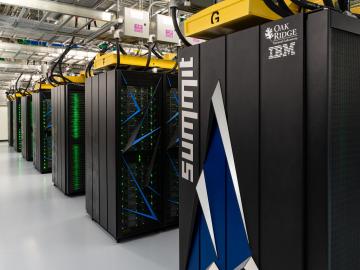
Scientists conducted a groundbreaking study on the genetic data of over half a million U.S. veterans, using tools from the Oak Ridge National Laboratory to analyze 2,068 traits from the Million Veteran Program.
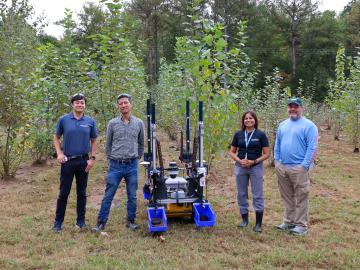
Scientists at the Department of Energy’s Oak Ridge National Laboratory recently demonstrated an autonomous robotic field monitoring, sampling and data-gathering system that could accelerate understanding of interactions among plants, soil and the environment.
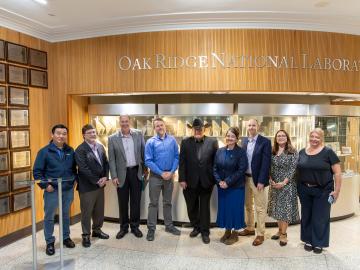
Four researchers from the Department of Energy’s Oak Ridge National Laboratory were recognized as Highly Cited Researchers by Clarivate, a data analytics firm that specializes in scientific and academic research; Clarivate calculates impact factor using data from Web of Science.
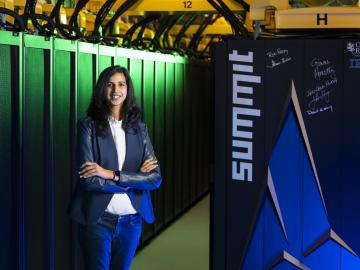
The Department of Energy’s Office of Electricity, in partnership with ORNL, has launched an experimental platform for energy sector-related data with enhanced emphasis on governance and usability.
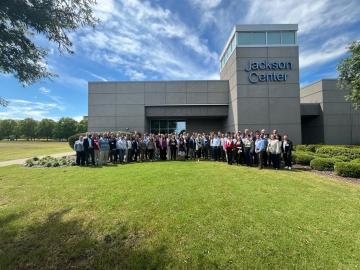
ORNL and NASA co-hosted the fourth iteration of this invitation-only event, which brings together geospatial, computational, data and engineering experts around a theme. This year’s gathering focused on how artificial intelligence foundation models can enable geospatial digital twins.
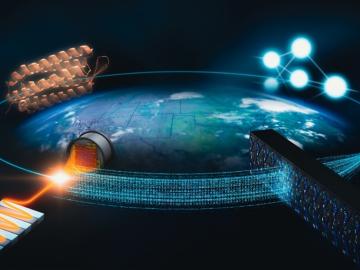
To bridge the gap between experimental facilities and supercomputers, experts from SLAC National Accelerator Laboratory are teaming up with other DOE national laboratories to build a new data streaming pipeline. The pipeline will allow researchers to send their data to the nation’s leading computing centers for analysis in real time even as their experiments are taking place.


